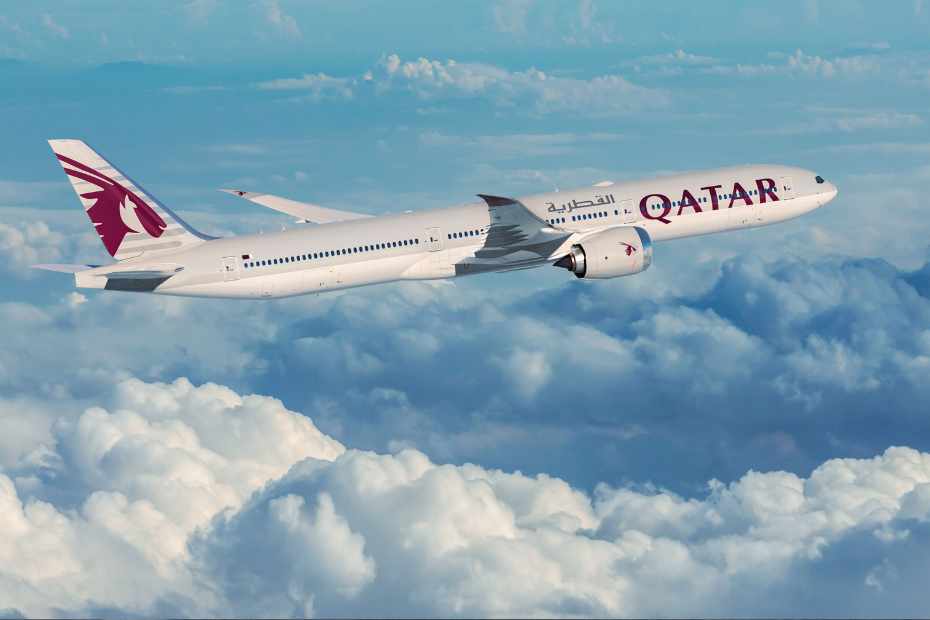What It’s Like to Cruise Through One of Australia’s Most Remote Regions — With Deadly Crocs and Ancient Landscapes
:max_bytes(150000):strip_icc()/TAL-seabourn-pursuit-hunter-river-KIMBERLEYPURSUIT0824-ebbb33968b114e249e9da41716c93a0d.jpg)
Pinch me: I’m sailing through a prehistoric paradise of towering sandstone cliffs in rich hues from orange to burgundy, an aqua ocean, and beckoning white-sand beaches, and it simply doesn’t feel real. A setting this spectacular typically teems with tourists and posh resorts, yet we zoom along in Zodiacs for miles and see nary a soul or animal. Life here is primarily invisible — lurking underwater, hidden in trees, camouflaged on ancient rocks. Some of it is dangerous, even lethal.
Welcome to northwestern Australia’s Kimberley, a region about the size of Sweden and one so remote that even most Aussies never visit. It’s one of the world’s last great wildernesses, with a sparse population, of which nearly half is Aboriginal. Here I am, a wuss who naturally leans to catastrophic thoughts, on an expedition outing for the 264-passenger Seabourn Pursuit during its June 2024 inaugural sailing. With the Kimberley now an expedition hotspot, I had to get on board this 10-day Broome-to-Darwin voyage, even though I was hesitantly onboard.
On our first outing, idling in a Zodiac near the mothership, we get a lecture on the ferocious saltwater crocodiles, which may swim beneath and around our rubber boats. Greg Fitzgerald, one of 24 expedition team members and our guide for the day, sounds almost gleeful as he rapid-fires off lots of croc info: Salties are stealth predators, making no wake or bubbles in the water. You will not see them approach. They can sense a Zodiac a kilometer away. They swim fast and even run fast, in case you’re wondering about going ashore. They will eat us. They even eat each other.
“Saltwater crocodiles are the oldest reptiles on earth, the apex of predators. They can reach 19 feet long and weigh 1,000 pounds or more,” he explains in a broad Aussie accent. “Never put your hands or legs in the water. Do not stand up unless I OK it,” Fitzgerald adds, as if I was considering it.
Matt Dutile
“Can a croc jump onto a Zodiac or bump it from underneath?” I ask, my voice quivering. “I’ll never say never, but I’ve never heard of it,” shrugs Fitzgerald. With those words of comfort, we are off full throttle, all leaning a bit forward in our Zodiac as instructed, me probably the most. Although we’re wearing lifejackets, I’d rather fall into the boat than out.
We see no crocodiles this day, but we learn so much about this primordial region that I can barely absorb it all. Take the underwater mangrove forests lining our ocean route. Fitzgerald points out their yellow leaves floating in the water. “They’re sacrificial leaves,” he says with reverence. “For the mangroves to survive in saltwater, these leaves give their lives, secreting all the salt to keep the trees alive.”
Matt Dutile
The sandstone cliffs bordering our waterways are a whopping 350 million years old and topped by flat plateaus dotted with acacia trees. Their layered, compressed, and craggy shapes, weathered by sun, water, and time, evoke faces and sandwiches — one is accurately nicknamed ‘lasagna.’ I must snap 1,000 pictures, as no two are alike.
It’s hot here, even though it’s winter, the only time expedition ships visit, as the rainy summer brings typhoons and unbearable heat. The temperature feels warmer than the reported high 80s, and the sun pounds through my protective hat and clothing. “Drink a liter of water an hour,” advises Fitzgerald. He’s right. If we don’t, dehydration and fatigue sets in. Seabourn Pursuit grows quiet when cruisers are not exploring — naps are definitely a thing.
Matt Dutile
Yet, despite the clime, I am mesmerized. Each day is a jaw-dropper. Imagine the extreme contrast of cruising on an ultra-luxury expedition ship, where all accommodations are sumptuous suites with marble baths, and complimentary caviar and alcohol flows freely. Yet the second we climb into a Zodiac, we time-travel to ancient times marked by fossilized dinosaur footprints and often dangerous undetectable life. I admit, I keep expecting a T. Rex to appear on one of these clifftop plateaus, a next-gen Godzilla, or King Kong beating his chest. It all looks like a movie set waiting for its dinosaur-driven cast.
As a rather Nervous Nelly, I find the expedition team — mostly unflappable Aussies eager for adventure and responsible for our safety every time we leave the ship — absolute heroes. They scout for crocs before and during our journeys ashore or snorkeling excursions, ensuring we all return safely to the boat, and I’m also impressed with how they guide the older passengers.
Our expedition team is downright gleeful here, as if crocs, venomous spiders, and poisonous snakes add to the allure. Fitzgerald kindly shares there’s a rare one-fanged snake here whose bite can kill you in 30 minutes. I’m in awe of team member Sue Crafer, who also races yachts around the world. Before we head to the Horizontal Falls, Crafer says, “Take in where you are. Feel the place.” She urges us to smell the iron from the sandstone and inhales deeply, her face awash with bliss.
We reach the Horizontal Falls in Talbot Bay — the only ones in the world — where extreme tides forcibly push water between narrow gorges, creating the illusion of gushing horizontal waterfalls. Crafer explains that water travels up to 10 knots, about our ship’s speed, as she guides our Zodiac to the Falls’ edge. We skid and swirl a little like the Mad Tea Party ride at Disney World. Then Crafer gets a radio call and grimly informs us about a situation with another Zodiac. She says aloud, “I hope no one is hurt.” Our group’s awe morphs to anxiety until we arrive at the boat with the “situation” and discover a smiling Seabourn crew greeting us with glasses of Champagne and passionfruit popsicles.
Matt Dutile
Next, we travel to Paspaley, a pearl farm in Kuri Bay, a special stop — Seabourn is one of just two cruise lines permitted to visit. We get a compressed course in how each South Sea pearl forms over a two-year process and even taste oyster pearl meat — delicious, like scallops — which our chef brings back on board for a sunset caviar bash.
One unforgettable morning, we rise at 5:30 a.m. for a Zodiac ride to Montgomery Reef, perhaps 1.8 billion years old. Sunrise lights the inky sky in blazing orange hues, making the early rise a thrill. We zoom past green sea turtles, whose heads pop out of the water and then vanish. This coral reef is the world’s largest inshore reef, appearing and disappearing during the Kimberley’s giant tidal changes, which can vary a whopping 30 feet in one day. In low tide, the reef seems to rise from the ocean, and suddenly, lagoons, inlets, waterfalls, and mangroves materialize. In high tide, the reef is swallowed by the sea once again.
We also gawk at cave art in two locations; they’re thousands of years old — some may be up to 65,000, as no one truly knows. At Freshwater Cove, indigenous Worrorra tribe members invite us to walk through a cleansing smoke ceremony and paint our cheeks with ochre. This experience feels joyful and surreal, and I grin from ear to ear. Before we view the sacred art, a Worrorra guide says a prayer in his native tongue. We relish such delicate drawings – a cyclone resembling a spider web, a hand, a turtle, and a fish — and leave with more questions than answers, wondering who drew them and what their lives were like so long ago.
Matt Dutile
Finally, we see crocs on the Hunter River’s sandy shores. We cut our motor and drift close. One is estimated to be about 1,200 pounds, probably male. I see his eyes, so reptilian, so primordial, and it was full-body goosebump time.
Near the cruise end, it’s Seabourn Pursuit’s inaugural day, and all cruisers gather for a shoreside ceremony on Ngula (Jar Island). Seabourn spent years developing relationships with the Wunambal Gaambera Traditional Owners to get to today. (Traditional Owners denotes Indigenous people possessing a traditional connection to an area of land designated their country from where their ancestors were forcibly removed.) These Traditional Owners, flown in by helicopters, are Seabourn Pursuit’s godparents, marking the first time Kimberley’s Indigenous people are godparents of any expedition ship, despite some vessels having sailed here for decades.
Matt Dutile
Seabourn also contributes to tourism initiatives so Traditional Owners can return to their country during the dry season and sell their beautiful arts and crafts to all expedition ships, not just Seabourn’s. Pride and joy fill their faces, and tears moisten ours. Instead of the traditional Champagne bottle used for ship christening, this one is custom-made of sugar and filled with Kimberley sand — a poignant, decisive nod to sustainable tourism for which I’m fully onboard.
Related
Turkish Airlines and Qatar Airways Suspend Mogadishu Flights Following US…
Home » Airlines News of Qatar » Turkish Airlines and Qatar Airways Suspend Mogadishu Flights Following US Embassy Terror Alert, Raising Security Concerns at
Local tourism destinations grow fast
Men sit at the Doha Corniche backdropped by high buildings in Doha on March 3, 2025. Photo by KARIM JAAFAR / AFP DOHA: Local tourism destinations are g
Hajj, Umrah service: Qatar Airways introduces off-airport check-in for pilgrims
Image credit: Supplied Qatar Airways has introduced an off-airport check-in
IAG, Qatar Airways, Riyadh Air, Turkish Airlines, Lufthansa & more…
Turkish Airlines – a Corporate Partner of the FTE Digital, Innovation & Startup Hub – is charting a course to rank among the top 3 global airlines for












